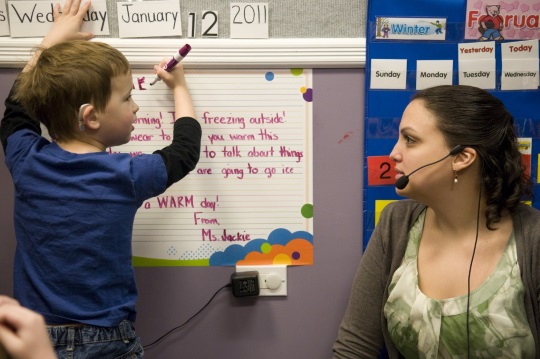

Has your child been diagnosed with a hearing loss? Has he been prescribed hearing aids to be worn at school? Does her teacher know how to make the appropriate accommodations so she will achieve the same academic level as her peers?
Studies have indicated that teachers tend to underestimate the needs of children with hearing loss. The National Institute on Deafness and Other Communication Disorders (NIDCD) found that teachers rarely receive enough training to work with such students, including monitoring amplification devices. Children who are hard of hearing are at risk for language delays – the more severe the hearing loss, the greater risk of language and communication difficulties. Teachers and other school personnel need to be well educated about the needs of children with hearing loss, and they must have the same high expectations for the success of all children.

What must parents and teachers be aware of in the school environment? Why are we seeing language delays in many children who wear hearing aids? Because not all children with hearing loss have adequate access to hearing oral language at school. Research has identified three primary factors influencing this:
|
Even with adequate acoustics in the classroom, your child needs extra visual supports. Classrooms can be noisy, with reverberation and background noise that makes it difficult to hear even without a hearing loss. Your child should be seated in the quietest area of the classroom, and teachers need to make instruction more visible.
Also, if your child wears hearing aids with caregivers, in preschool, or in elementary school, be sure to have regular conferences with the adults in that setting. It is not enough for teachers and caregivers to know that a child wears hearing aids and that the aids should be amplifying sound at the correct level for learning. Daily monitoring by parents and other adults is crucial for learning and language development. Don’t feel funny about being overly watchful and vigilant during the critical early years. It’s what great parents do.